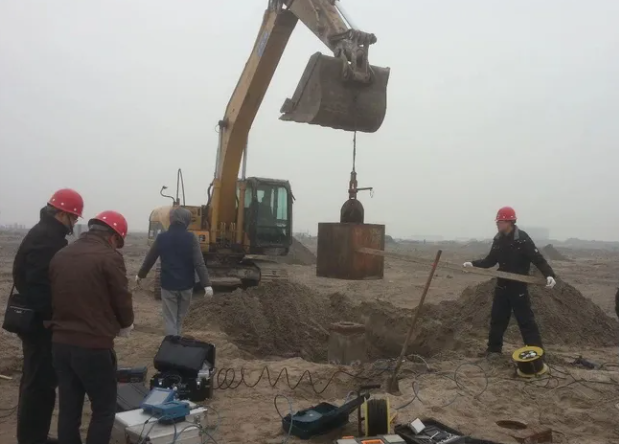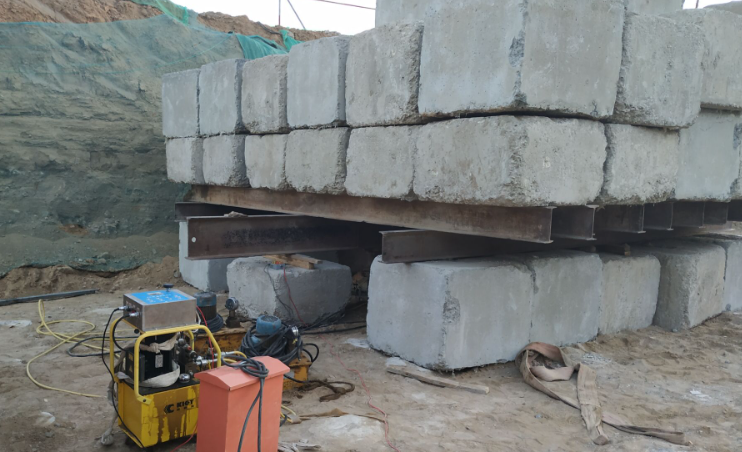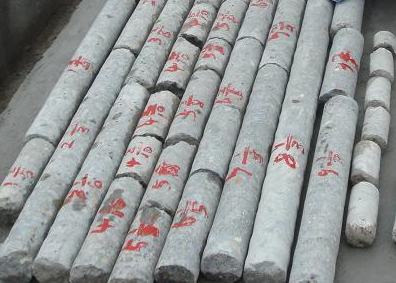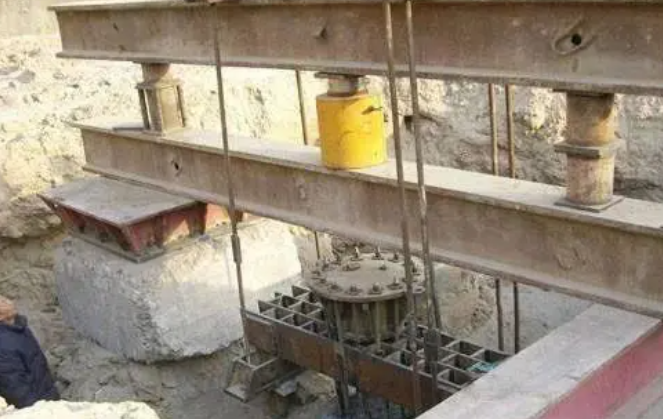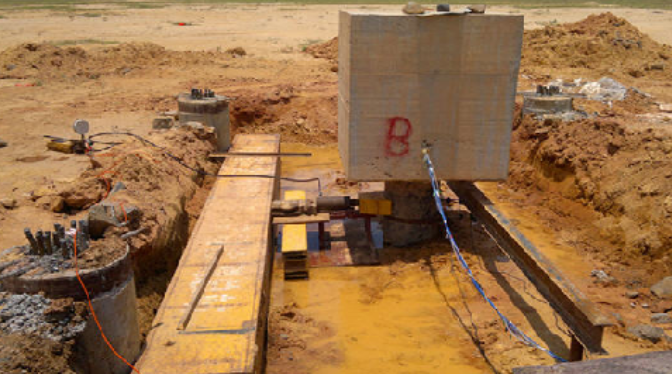1. Low strain detection method
The low strain detection method uses a small hammer to strike the pile top, and receives stress wave signals from the pile through sensors bonded to the pile top. The dynamic response of the pile-soil system is studied using stress wave theory, and the measured velocity and frequency signals are inverted and analyzed to obtain the integrity of the pile.
Scope of application: (1) The low strain detection method is suitable for determining the integrity of concrete piles, such as cast-in-place piles, prefabricated piles, prestressed pipe piles, cement fly ash gravel piles, etc.
(2) In the process of low strain testing, due to factors such as the frictional resistance of the soil on the pile side, the damping of the pile material, and changes in the impedance of the pile section, the ability and amplitude of the stress wave propagation process will gradually decay. Often, the energy of the stress wave has completely decayed before it reaches the bottom of the pile, resulting in the inability to detect the reflection signal at the bottom of the pile and determine the integrity of the entire pile. According to actual testing experience, it is more appropriate to limit the length of the measurable pile to within 50m and the diameter of the pile foundation to within 1.8m.
2. High strain detection method
The high strain detection method is a method for detecting the integrity of pile foundation and the vertical bearing capacity of a single pile. This method uses a heavy hammer weighing more than 10% of the pile weight or more than 1% of the vertical bearing capacity of a single pile to freely fall and strike the top of the pile to obtain relevant dynamic coefficients. The prescribed program is applied for analysis and calculation to obtain the integrity parameters of the pile foundation and the vertical bearing capacity of the single pile. It is also known as the Case method or Cap wave method.
Scope of application: The high strain testing method is suitable for pile foundations that require testing the integrity of the pile body and verifying the bearing capacity of the pile foundation.
3. Acoustic transmission method
The sound wave penetration method is to embed several sound measuring tubes inside the pile before pouring concrete into the pile foundation, which serve as channels for ultrasonic pulse transmission and reception probes. The sound parameters of the ultrasonic pulse passing through each cross-section are measured point by point along the longitudinal axis of the pile using an ultrasonic detector. Then, various specific numerical criteria or visual judgments are used to process these measurements, and the pile body defects and their positions are given to determine the integrity category of the pile body.
Scope of application: The acoustic transmission method is suitable for the integrity testing of concrete cast-in-place piles with pre embedded acoustic tubes, determining the degree of pile defects and determining their location
4. Static load test method
The pile foundation static load test method refers to applying a load at the top of the pile to understand the interaction between the pile and soil during the load application process. Finally, the construction quality of the pile and the bearing capacity of the pile are determined by measuring the characteristics of the Q-S curve (i.e. settlement curve).
Scope of application: (1) The static load test method is suitable for detecting the vertical compressive bearing capacity of a single pile.
(2) The static load test method can be used to load the pile until it fails, providing single pile bearing capacity data as a design basis.
5. Drilling and coring method
The core drilling method mainly uses a drilling machine (usually with an inner diameter of 10mm) to extract core samples from pile foundations. Based on the extracted core samples, clear judgments can be made on the length of the pile foundation, concrete strength, sediment thickness at the bottom of the pile, and the condition of the bearing layer.
Scope of application: This method is suitable for measuring the length of cast-in-place piles, the strength of concrete in the pile body, the thickness of sediment at the bottom of the pile, judging or identifying the rock and soil properties of the bearing layer at the pile end, and determining the integrity category of the pile body.
6. Single pile vertical tensile static load test
The test method for determining the corresponding vertical anti pull bearing capacity of a single pile is to apply vertical anti pull force step by step at the top of the pile and observe the anti pull displacement of the pile top over time.
Scope of application: Determine the ultimate vertical tensile bearing capacity of a single pile; Determine whether the vertical tensile bearing capacity meets the design requirements; Measure the lateral resistance of the pile against pull-out through strain and displacement testing of the pile body.
7. Single pile horizontal static load test
The method of determining the horizontal bearing capacity of a single pile and the horizontal resistance coefficient of the foundation soil or testing and evaluating the horizontal bearing capacity of engineering piles using actual working conditions close to horizontal load-bearing piles. The single pile horizontal load test should adopt the unidirectional multi cycle loading and unloading test method. When measuring the stress or strain of the pile body, the slow maintenance load method should be used.
Scope of application: This method is suitable for determining the horizontal critical and ultimate bearing capacity of a single pile, and estimating soil resistance parameters; Determine whether the horizontal bearing capacity or horizontal displacement meets the design requirements; Measure the bending moment of the pile body through strain and displacement testing.
Post time: Nov-19-2024


